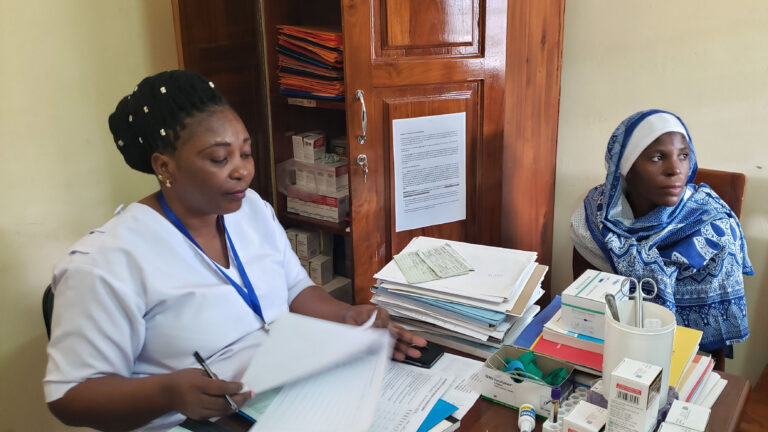To maximize progress in global health, invest more in community health workers
To maximize progress in global health, invest more in community health workers
This article was originally published in the journal STAT News.

Anna Mzeru’s day shifts as a nurse in a clinic in the Bagamoyo region of Tanzania often stretch into the evening. She and a physician assistant are the only two health workers at a facility that should have nine others to be fully staffed: two more nurses, pharmaceutical and lab help, two general health assistants, and a clerk. The two clinicians see as many as 120 patients a day and attend an average of 15 births per month.
A shortage of front-line health workers — those providing services directly to patients, many of whom live in rural or hard-to-reach areas — is common in Tanzania. The country has a 50% staff vacancy in public health care facilities, with particularly large shortages in rural areas. That creates barriers to delivering quality health care and achieving public health goals, especially for HIV/AIDS prevention, detection, and treatment.
Recruiting more community health workers could help ease the strain. These workers — many of them women — help take care of their neighbors by testing for infectious diseases, reporting outbreaks, dispensing vaccines and medicines, providing routine services for family planning and maternal care, counseling on how to prevent illness and seek treatment, and more.
Tanzania isn’t the only country with this problem. The World Health Organization reports that the world will face a shortfall of 18 million health workers by 2030, particularly in low- and middle-income countries, which currently have the greatest share of the global disease burden and the highest number of preventable deaths. They are also the countries from which many emerging and re-emerging global health threats originate, sometimes spreading to other continents. In 2019 we saw another Ebola outbreak in the Democratic Republic of the Congo, Lassa fever in Nigeria, hantavirus in Panama, and polio in the Philippines. The new year has brought us an outbreak of a novel coronavirus in China, which has already spread to other countries.
Low- and middle-income countries need attention now, and will require even more in the future. Africa faces unprecedented population growth, with the United Nations estimating that 25% of the world’s population will inhabit the continent by 2050. Non-communicable diseases already cause 71% of deaths globally, which will continue to escalate with a rapidly aging population. The world will face new threats like climate change, which between 2030 and 2050 the WHO estimates will cause approximately 250,000 additional deaths annually.
Global health programs have been trying to catch up as donors invest in innovative ways to recruit, train, equip, and retain front-line health workers. But those efforts are crumbling from an onslaught of setbacks, including general cuts to global health budgets, poor knowledge exchange among programs, and even brutal attacks on health care workers. According to a U.N. report, 171 health workers were killed worldwide in the first nine months of 2019.
Investments that have already been made are in danger of failing if we don’t meet basic implementation needs. Recognizing this, the U.S. Agency for International Development, the President’s Emergency Plan for AIDS Relief, and other programs and donor organizations are putting greater emphasis on local implementation and strengthening systems. Resilient, responsive health care starts with front-line health workers, including community health workers.
A resolution moving through the U.S. House of Representatives (H.R. 467) aims to close this gap. It calls on federal agencies to implement integrated programming across sectors to strengthen local front-line health teams and the systems supporting them in U.S.-funded global health programs, with concrete targets and clear accountability mechanisms. Resolutions like this have been introduced before, but Congress has taken no action.
Investing in front-line health workers, including community health workers, makes sense: A strong health workforce is essential for building health system resilience, fostering economic growth, and stopping deadly disease outbreaks at their source. Nations with healthy people are more likely to be productive, prosperous, and peaceful, while those with less-healthy people are more prone to instability, conflict, and outbreaks. When Ebola emerged in West Africa in 2014, Liberia’s ambassador to the U.S. reported that the country had fewer than one doctor per 10,000 citizens. (The U.S. has 26 doctors per 10,000 citizens.) That Ebola outbreak ultimately killed 11,000 people in the region and cost global economies $53 billion, including $5.4 billion in emergency funding from U.S. taxpayers.